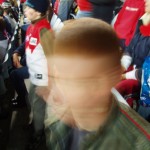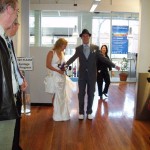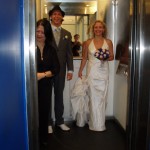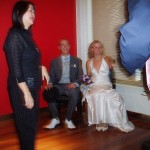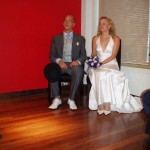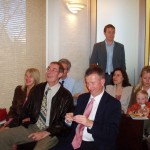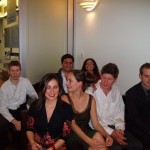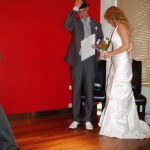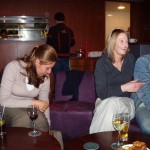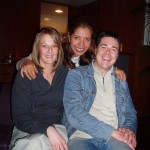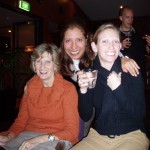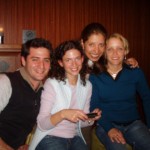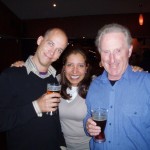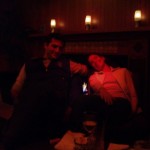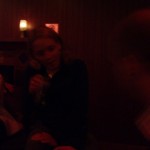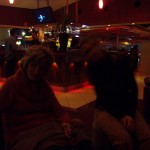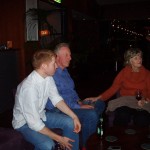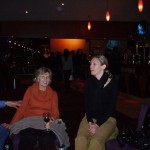This is an archive post relating to a final year dissertation for my Undergraduate degree – Bachelor of Design in Visual Communication. Original essay was delivered as both a printed book (printed in reverse order) and as a website). Still to be updated: Links and images
<entry>
april 2001.
the new millennium. new technologies such as sms and email are creating digital dialogues which subvert the role of spoken communication; traditional written language is having to evolve to meet the high demands of more fluid, temporal communication forms while the internet has given us hyperlinks, creating non-hierarchical information flows which challenge more established modes of indexation and navigation.
we have surrounded ourselves with technology. from cars to computers, from televisions to telephones, humans are more frequently interfacing with these newMedia devices, in what can be described as the “information event”, where more often than not, actually retrieving the information is as important as the information itself.
but when do we stop and take stock of possible implications arising from these interactions?
now.
Marshal McLuhan argues, “electronic man must know the effects of the world he has made, above all things…” McLuhan 1972 quoted in Varey, 1999. he believed that, the most important thing was to realise the consequence of the newMedia technology since, as Varey suggests, “…changes in modes of communication reshape human existence…” Varey, 1999.
theoretically, ENTRY is a way of describing the point of interaction or information event in which humans more frequently find themselves. at once it is about a process of going into something, literally, as in the front doors of a house or shop, but more predominantly, is used as a way of describing the interactions which occur between humans and machines.
symbolically, it represents all that has come before: the design, the thought, all of the cognitive testing and schematic representations leading up to the initial contact.
perceptually, ENTRY can be opaque, and shower you with imagery, masking a lack of content, but that lack can also make it transparent, like looking at the word backwards. it must be remembered then, that any ENTRY can also be seen as an EXIT, a way of leaving a given interaction.
ENTRY is a way of looking at narratives which are created by the act of interaction. this dissertation, then, will attempt to further explore these elements, by investigating different examples of ENTRY in newMedia and contextualising them with reference to our everyday lives. a forum exploring representations of ENTRY has also been established, entrydotcom is here…
<dialogues><narratives>
traditionally, narrative has been described as being “a story [which] contains a sequence of events…” portraying fiction, non-fiction or social documentary; narrative in this sense has its roots in literature, theatre, film and more recently television and “…takes place within or over…time…” Berger, 1997: pp 4.
to highlight an example of this, following is a brief outline of the nursery rhyme little red riding hood, demonstrating how we can establish the structure of the surface narrative quite quickly in terms of actors and actions…
the protagonist, little red, is given a basket of goodies to take to her grandmother. she is told to make her way directly to grandmas house and not to talk to strangers, but when she disobeys these orders, the villain, the big bad wolf is able to learn her destination and beat her to the house, thereupon eating grandma and luring little red into the house to eat her as well. climactically, the hero [the axeman] arrives on the scene, saving both little red and grandma.
the action takes place only after the protagonist has been relayed a set of rules, and then broken those rules. the introduction of the villain adds suspense and allows the story to move through to grandmas house, while closure and resolution of the story comes when the hero arrives. schematically, this can be represented as follows, showing the simplicity of this formula. little red schema
likewise, traditional film narrative has a definite structure where
“…the narrative film cues and constrains the story construction activities of the spectator in such a way as to enable her to form the space, time, and cause-effect dimensions of the film into a single, coherent mental representation.” Buckland, 2000: pp 30
devices such as establishing shots, repetition, cuts and close ups all allow the film to communicate as effectively as possible within the restraints of the medium.
however, this dissertation does not argue that narrative is purely a scripted form of creativity and constrained to film or nursery rhymes, because clearly the interactions we undertake with other humans, and so too the machines we more increasingly communicate via, are all cases of narratives which utilise their own language and structure.
newMedia narratives look at how everyday “…abstract structures… interact with an infinite amount of perceptual input…” Buckland, 2000: pp 29, as a way of describing how dialogues with machines directed, create action, since
“narrative is the primary way through which humans organise their experiences into temporally meaningful episodes…” Richardson, 1990 in Berger, 1997: pp10
the newMedia narrative addresses the actions we undertake when interacting with a newMedia actor or device, and the subsequent plots arising from this interaction.
<actions><interactions>
interaction is a part of our everyday lives.
we interact with the toaster, so as not to burn the multi-grain; we interact with our pets who give unconditional love in return for schnappos; we interact with the television, and sometimes the people on it as well. life is one big interaction. 24 hours a day, 7 days a week, humans are interacting with machines in dialogues of the everyday.
here, narrative can be used to describe the structure of and the navigation within the social schemata which represents the dialogues undertaken. as already suggested, these schema have the potential to be infinitely more complex than a simple nursery rhyme, but are still relevant because they demonstrate how man-machine dialogues manifest themselves narratively.
take for example Clarke’s 2001: A Space Odyssey. HAL the super computer aboard Discovery discusses mission objectives with his human crew, where the interaction is voice operated …an effortless and natural form of communication between a human and machine, which can then respond in kind since
“…the exchange of information is as intrinsic to our universe as are energy and matter…” Beardsley 1994: pp9.
upon analysis of this mode of ENTRY, Sally Beardsley suggests…
“in the dialogue with an electronic product, operating the product means changing something, making something happen. one organised system (man) exchanges information with another organised system (machine).” Beardsley 1994: pp8.
navigating HAL’s ENTRY’s can be referred back to as the action, while the crew of Discovery as directors, dictating the individual actions of HAL’s various navigational interfaces. the actors here, are the devices used to make the connections between the human crew and HAL
analysing everyday newMedia devices, I should first like to discuss the concept of a web of connectivity in newMedia as a way of representing the texts which make up the script of actions undertaken.
<actor><text>
the main characteristic of a newMedia device is its ability to connect us to the rest of the world [read: friends, family, business associates, peers, other devices etc]. in 2001 man is becoming increasingly interconnected in a “web” of information data-flow.
Gibbs, in an attempt at distinguishing between the plethora of data types and formats, uses the abbreviations e-texts [electronic text] and p-texts [print text]. Gibbs (et al) (eds), 2000: pp 63, suggesting that, “p-texts…involves selection, reflection and creation of meaning…” while e-texts are transitional and can be edited. here, e-text refers to not only the actual text as traditionally thought of, but a text which includes more than just writing.
“In the new world of information technology, traditional forms of written and spoken communication are combining with images, pictures, linguistic shortenings of all kinds, repackaging of bits and pieces of related words, typographical signs and other inventive usages to form a new language and new literature.” Gibbs (et al) (eds), 2000: pp 11
used in conjunction with newMedia devices, e-texts re-evaluate the role of language in a climate of temporality, icon dependency and universal understanding.
<language>
traditionally, written language has been the recorder of information, science and law, and up until recent times printing these records was carried out by monks and noblemen who meticulously recreated texts by hand.
it wasn’t until Guttenberg’s bible that printing, flowing to writing, became commonly used by and accessible to everyday people. up until this time, the most common mode of communication was speaking.
narratives were told via word of mouth, and the information event was listening to the stories told by others, or possibly the act of asking questions of other people.
this tradition meant that written language retained very firm and formal structure and syntax, while spoken forms of communication were allowed to evolve, being much less structured and much more instant.
this was also partly because of the temporal aspects of the spoken form, being an involved communication process, rather than an exclusive and retrospective process. Chafe, 1985: pp 105-123.
with the advent of newMedia texts such as sms, email and web pages, however, theses contrasts between traditional written and spoken language have begun to blur.
now we have technologies which offer the very temporal aspects of speaking, but using the exclusive form of writing. this has led to an evolved form of writing, one which Taylor and Saarinen argue,
“falls somewhere inbetween pre-electric letters and telephone conversations.. .[they] are speech that is a writing and writing that is a speech.” Taylor & Saarinen 1994: pp 4 chpt 11.
instead of voicing our thoughts, and allowing our cognitive power to form coherent passages of speaking, we are becoming silent, voices distanced by the trappings of new technology and the “no-place” of cyberspace . Taylor & Saarinen 1994: pp 4, chpt 17.
newMedia actors are becoming extensions of our voices, and the temporal aspects of spoken communication are being utilised to create the evolved writing form because, by its’ very nature, speech allows for tangents in conversation flow, while text data transmission is fast and efficient.
</language>
</actor></text>
<actor><mobile phone>
in the 80′s, a mobile phone was a brick with reception. in the past 20 years, though, smaller computer chips and better battery systems have helped reduce the size of the mobile handset, until it has become small enough to be lighter than most wallets, with exponentially more features added to each new model.
this reduction in size coupled with the overall increase in newMedia communication, has seen the mobile phone become more useful than the home phone, and more popular, reducing costs and thereby further increasing its popularity. aside from letting people interact in the same way as the home phone [ie direct spoken interaction], constant contact is what this new technology targets: users can be contacted wherever they are [except some remote areas].
Nokia©, one of the most popular mobile phone companies today, have as their slogan…”Connecting People.” Nokia© Handbook, 2000: pp1. they pride themselves in their ability to extend your “vibrant…exciting” day by allowing you to “have fun staying in touch”. Nokia© refer to this as “human technologyâ„¢,” where they have tried to make the interfacing between human and computer as natural and instinctive as possible.
the mobile phone now offers its users features which transform the simple act of communication into a machine-mediated dialogue, where the user is in constant contact with the machine, as it relays information sent to it via other similar devices, rather than directly to the people whom they wish to communicate with.
sms [short message service] utilises this technology allowing users to send and receive text-based messages through their mobile phone handset. the advantage of this technology over actual talking is the cost of sending a message is cheap [20c] while delivering the message to the recipient is an instant process. compared to email , which, more often than not is an asynchronous form of communication, sms gives users instant feedback.
with email
“…the sender and receiver communicate at different times, each one reading and writing locally on her own computer.” Eklundh, 1996 in Oostendorp (et al) (eds), 1996: pp 123.
this has helped sms become a more and more prevalent form of preferred communication for the younger generation, with The Daily Telegraph reporting,
“parents frustrated at teenagers’ addiction to mobile phone text messaging, should brace themselves – the craze is set to grow.” The Daily Telegraph, 2001: pp 7.
it quotes Nokia©, who state that sms in Australia is only in its infancy, and hence the amount of sms being sent will just keep on growing as it becomes even more popular. this popularity in alternative communication forms is already having an effect on other human-machine interfaces.
<the drink machine dialogue>
recently, Coca-Cola© introduced drink machines at central railway station in Sydney which have been adapted to suit coin-free, hassle-free shopping. the concept is, instead of having to feed coins into the machine, you ring it up or message it on your mobile phone, with the cost of the drink attached to your next phone bill. drink schema
here, the combination of device and action has created the change in language structure, so that even compared to a traditional home PC [where the user has a mouse, keyboard and a screen which is at least 14" and resolution of 640x480 pixels], the mobile phone user must direct action and undertake interaction with often no more than one finger.
using a screen on average no bigger than 5cm x 5cm. colourful graphic user interfaces [gui] are not an option, and navigation is structured around simple menu systems which branch off into lower levels of hierarchy if needed.
the phone utilises a keypad of 15 buttons or less to do what a keyboard of 102 keys and a mouse do with the home PC. obviously then, undertaking a conversation with the drink machine can be a limited exercise: at the moment a series of numbers that tells the machine what it is you want is the extent of any given dialogue. but how does this then impact on human to human conversations?
utilising sms for such meaningful interaction, means having to compose messages of less than 450 individual characters in length, on a keypad that uses 12 buttons to reproduce the entire combination of letters and numbers at our disposal.
described schematically, it is very clear to see why there is little or no room for any real emotion or human characteristics without utilising a very creative, temporal writing style, with people finding ways to shorten words and phrases, portraying emotions using a few well placed symbols: eg, the smiley face 


“…there are many variations on this theme, enabling a range of other facial expressions; or writing…non-verbal noises such as laughter (eg hehe)…” Gibbs (et al) (eds), 2000 pp 162.
here, the actors quite literally take on formal aspects of character acting, voicing a range of emotions which aid in establishing [to a limited extent] the tone of the dialogue and the attitude of the sender / receiver; the user has been stripped of the ability to voice this in any other form because of the limitations of the sms technology.
</the drink machine dialogue>
</actor></mobile phone>
<actor><internet>
holding real time conversations over the internet means utilising chat programs like IRC and ICQ. IRC or Internet Relay Chat has a greater capacity for text, and is more instant than email, with clear turn taking by users and more of the contextual experiences that email lacks [having transparent conversational structure], but it does however, rely on the internet, and on the recipient being online at the time the dialogue takes place.
ICQ or I seek you, an instant messaging service which, like IRC, is not a wireless device like a mobile phone, does however allow its’ users to send messages from their computer desktop via the ICQ program, directly to the mobile phone of the selected user.
but like email, it also falls prey to a certain lack of conversational structure, once more than 2 people participate in any given dialogue.
but because in both IRC and ICQ the two [or more] people involved in the conversation are online during the dialogues, this allows the written conversations to, like sms, be very fluid and voiced similar to spoken conversations. as Gibbs puts it, the “…immediacy of feedback make it much more similar to speech.” Gibbs (et al) (eds) 2000, pp 163.
also, like sms, the technology of the internet is relatively cheap, so that conversations can be, and are, held between people from all over the world, without STD call rates pushing up phone bills.
arguably, there is a potential risk in allowing computers to take on the role of mediators – of what in essence is a natural human act, face to face contact – because, as Jan Zastrow, from ICQ suggests,
“…there can be what I’ve come to call “chat gaps” -awkward pauses where you lose the thread of the conversation, something that body language and intonation would take care of in a face-to-face… conversation…” Zastrow, 1999.
highlighting this point is a liquidViscom dialogue I had earlier this year. in this example, 4 people [including myself] were involved in the conversation, and at any given time any of the 4 people were talking with each other, or to everyone at once, or simply sitting idly by and listening to what was being said by others.
the ease with which one can become lost in the conversational thread of this chat session is very noticeable. of course, the problem has been heightened because the context and flow of the original chat session has been removed, but even from within the conversation, the lack of visible turn taking, coupled with the speed of response [as dictated by how fast you can type] add together to reflect the very schizophrenic nature of hypertext.
clearly then, it is important to understand what effect hypertext has on readings and understanding of newMedia texts, so following is an analysis of some of the more important issues surrounding this topic.
<hypertext>
the nature of hypertext is such, that “…it creates the possibility for multiple ENTRY points…” Goldman, 1996 in Oostendorp (et al) (eds) 1996: pp 7, which can dramatically vary the way that people read, understand and navigate through the information event, creating various levels of perception.
the initial perceptual shift, though, comes not from the hypertext itself, but the screen on which it is displayed, for without the monitor, the need for re-evaluations of traditions would probably not exist.
<actor><monitor>
inherent to the format of hypertext, is that information is being displayed on a monitor, which fails to translate the traditional print-based and real world schema into the virtual world. no sooner is tangible information translated into its digital cousin, then traditional conventions of layout and design become obsolete. with the monitor, comes a shift in our perceptual position, from simply a submissive viewer to an active director of action.
in the computer environment, this can see us clicking on an icon to activate a program, or arranging our desktop in such a way as to make sense to us. on the web, it could be scrolling down a site to view information at the bottom of the page.
“…the illusion [is] that when you use the internet, you enter a ‘real’ world.” Gibbs (et al) (eds): 2000, pp 36.
to try and combat the perceptual difficulties of moving into the virtual world, we utilise various symbols and draw on real world analogies to help us navigate within the computer environment.
this has had varying degrees of success, with items like the recycle bin and folder icons barely changing since their inception. the stage or desktop where our narrative takes place has also remained a common tool for most gui designers.
this has slowly begun to change, with companies like Microsoft© exploring new gui’s which attempt to address the dimensionality of cyberspace, utilising powerful 3D technology and playing with the idea of virtual space.
but purely based on the physicality of the computer screen [let alone useability], it would be entirely inappropriate to have for example, an entire book appear on-screen without first reconsidering the way each part of the text relates to the other, and redesigning it so that it utilises with more success the intertextuality of the medium.
</actor></monitor>
<rhizome>
while traditional indexation is still a valid response to the hypertextual environment, responding to this hypertextuality creates a new narrative that removes the need for up-down hierarchy, instead utilising the rhizome theory to create connections and relationships based on words and image within texts that allow for tangents and changes of direction, again similar to the structure of speech.
the rhizome describes a non-hierarchical approach to navigation, so that, contrasted to the very structured order of most computer operating system gui’s , links between relevant data can appear at any stage within a text, being just as important as any of the other information present.
traditional menu’s are not used, and the style of index used in most books, of chapter, heading, paragraph begin to become obsolete…or at least so mutated that the terms should really be redefined or abolished altogether.
as suggested on One Zero One [a web site dedicated to exploring the hypertextual concept of the rhizome],
“….there is no hierarchy, nodes are present, but there are many [ENTRYs] and no one way is preferable to another. the perception of connectivity is initiated by you…” One Zero One, 1999.
taking the idea of a book further, an example on the web that addresses both the hypertextuality and intertextuality that the internet offers is the Visual Thesaurus, created by Plumbdesign.
trying to represent schematically all the possible narratives available by any given interaction with the Thesaurus would be as onerous a task as creating the Thesaurus itself.
but the mere fact that this interactive functions the way it does, branching off as it were, on tangents between words of similar meanings, shows that it already represents the action schema of the interaction.
what I find interesting to question, is whether newMedia devices such as those suggested already, take us closer to becoming more artificial, or on the same token, if humans are forcing these newMedia devices to become more anthropomorphic, so that we can handle more effectively the cognitive aspects of the virtual, in turn making the process of communication more efficient.
returning for a moment to Clarke’s vision of the new millennium, the perceptual user interface [pui] that HAL utilises suggests that on both sides of the equation, an element of compromise resides… reflecting the adaptability of both humans and machines to the transience of the newMedia text. another example of this is how we have adapted the internet to aid as a transfer mechanism of our virtual self.
“virtual bodies are the bodies we don’t know…they are mutating, evaporating, and recombining into multiple virtual identities…liquid and ever changing. the body of the future will adapt to the strong schizophrenic-like fabric of cyberspace.” posting by pit@uropax_contrib_de, Brave New World,1995 in Huffman, 1995.
the internet is scattered with examples of how we have attempted to create worlds out of the digital signal that surrounds us when online. from basic bulletin boards, which allow posting of messages accompanied by emoticons [pictorial version of the alpha-numeric based emotion icons as described previously], through to advanced chat sites Habbo Hotel, which creates a virtual community that has established a new public space online, complete with currency, food, drinks and buildings.
</rhizome>
</hypertext>
<space>
exploring this idea of creating a space for our virtual self to reside, is the Apartment.
“in the Apartment you are confronted with a blinking cursor. as you type the room responds, engaging you in conversation, building a home around you. this dwelling is built of spatial image / text fragments, forming an equivalence between the space you inhabit and the mental space of your conversation.” Turbulence, 2000
the Apartment becomes a house which develops based on direction by the user, with the actors here, the words keyed in by the user. interaction in the Apartment is both real and perceived, in that choices of the words and language the user utilises is entirely self suggested, however the way each word responds to the various rooms within the Apartment is pre-programmed, cross-referenced [like the Thesaurus] to established concepts of meaning and context.
for example, entering in the word sex, will create a bedroom, while entering in the word shoe will attach a foyer to the house. abstract items like blue result in windows being created, while obvious words such as knife are placed where they belong, into the kitchen.
but this is not the extent of the meaning behind Apartment, because its not until you view the “metropolis” of Apartments created by others, that you fully appreciate the online voices of people who have transferred their mental schemata to the virtual pool. it is then that you realise “…the net is the place where consciousness appears without body…” and that “…as coded entities, we all have the potential to…exist throughout eternity – in cyberspace.” Huffman, 1995
the Apartment gives us a voice and body. just as evolved temporal writing does for sms and ICQ, the new public space of the internet addresses the tyranny that comes with technology, where the “constructed dichotomy between the real and the virtual…” can, if we are not careful, distance us from the interpersonal relationships as humans we crave. Stensile, 1994 in Huffman, 1995
</space>
</actor></internet>
</actions></interactions>
<entrydotcom>
last semester I began to write and research about how humans interface with computers, by developing a user-testing module which could be used as a dialogue between the user and the computer, in real-time… recording the results in a simple text document which could then be emailed or printed out later.
I became interested in the notion of the meta narrative, as a way of getting people to talk about the technology by using the technology. with the programme I created, the meta-narrative represented the process of interacting to respond to questions on interaction. this raised more questions than it answered: in particular how the program underwent a transformation from an approach to qualitative testing of computer interfaces, to a narrative within the technology and interface itself.
entrydotcom continues this idea of the meta narrative, once again using the technology as a way of having people interact with, and hold discussions on, issues ideas concepts related to ENTRY.
it has been established as a schemata of this dissertation, drawing special attention to exampled modes of interaction, and to entrydotcom’s very own discussion forum, which is a working example of the virtual space touched on previously and a forum on issues raised within this dissertation.
<forum>
entrydotcom has multiple ENTRY points.
in an attempt to highlight the newMedia devices discussed, entrydotcom utilises sms, ICQ, email and a web site so that a range of responses [dictated by the technology] can be gauged.
by far the most popular of technologies, in terms of feedback, was email, followed by sms, ICQ and finally the online forum. of the last two items mentioned, very little input was received from the online forum, and I think this had a lot to do with the temporality of the site created and the fickleness of the internet in general – on several occasions the site simply vanished or was unaccessible.
now, if this was the case for a simple text document, do we really want our future selves to inhabit this no-space, where one day the server might go down, and we lose the memory of us ever existing?
I alluded to this when mailing entrydotcom users, with many suggesting that rather than the newMedia narrative successfully creating a new online community and bringing people closer, it was actually marginalising them, with the “self” of the human race disappearing.
as McLuhan argues,
“as we transfer our whole being to the data bank, privacy will become a ghost or echo of its former self and what remains of community will dissapear.” McLuhan, 1980 quoted in Varey, 1999.
by creating the global village, we are forgeting the individual: latching onto the speed of newMedia, the i is becoming we through speed. Taylor & Saarinen 1994, pp2 chapt 17
this has manifested itself in all of the technologies coverred by this dissertation, and hopefully has had an effect on the actual reading of this dissertation in its online form as well.
</forum>
ENTRY could best be described as the “information event for dummies” concept, a way of encapsulating the gamut of ideas and issues which newMedia narratives raise without suggesting that the topic is at all coverred in its entirity.
by its very nature, ENTRY has such scope that any definitive response to all issues for all people would be out of the question. what it does do, however, is introduce the idea that narrative can be more than simple story telling, and that ENTRY as a concept can be used as a starting point into dissecting the topic of naratives in newMedia.
one of the main concerns to come out of this dissertation is whether the newMedia narrative has been dehumanised so much so that the homogenity of the actors has become hidden behind their ENTRY. the problem with this, however, is that without this façade, users could EXIT before realising the information event, suggesting that the narrative produced failed to result in action created.
and so the compromise between man and machine continues. it is not the role of this dissertation to suggest exactly where ENTRY will finish in the future, or if indeed it will ever stop, but at all times it must be rememberred that “as the kinds and number of messages increase, designers must find new ways to transmit…” Beardsley, 1994: pp 3 these messages, or risk the technology dictating the information event, action and retrieval.
the schemata of the newMedia narrative will continue to become more advanced and intricate, but if we are able to understand more solidly what it means in context to our interaction with it, we have a better chance of retaining control over our future.
little red riding hood had it easy.
</entrydotcom>
</dialogues></narratives>
<bibliography>
Nokia (2001) 3310 Instruction Manual
Arthur C Clarke (1968) 2001: A Space Odyssey, London: Legend
Sally Beardsley (1994) Conversations at the Interface, Copenhagen: Danish Design Center
Susan R Goldman (1996) Reading, Writing and Learning in Hypermedia Environments in Herre van Oostendorp (ed) & Sjaak de Mul (ed) (1996) Cognitive Aspects of Electronic Text Processing, Volume LVIII: Advances in Discourse Processes, New Jersey: Ablex Publishing Corporation Kersten
Severinson Eklundh (1996) A Dialogue Perspective on Electronic Mail: Implications for Interface Design in Herre van Oostendorp (ed) & Sjaak de Mul (ed) (1996) Cognitive Aspects of Electronic Text Processing, Volume LVIII: Advances in Discourse Processes, New Jersey: Ablex Publishing Corporation
W L Chafe (1985) Linguistic Differences produced by differences between Speaking and Writing, in D R Olsen N Torrance (ed) A Hildyard (ed) Literary, Language and Learning: The Nature and Consequences of Reading and Writing (pp 105 – 123). Cambridge: Cambridge University Press
Mark C Taylor & Esa Saarinen (1994) Imagologies, Media Philosophy, New York: Routledge Warren Buckland (2000) The Cognitive Semiotics of Film, Cambridge: Cambridge Unversity Press Arthur Asa Berger (1997) Narratives in Popular Culture, Media, and Everyday Life, London: Sage Publications
Donna Gibbs (ed) Kerri-Lee Krause (ed) (2000) Cyberlines: Language and Cultures of the Internet, Albert Park: James Nicholas Publishers
Annette Wong (2000) Cyberself: Identity, language and stylisation on the Internet in Donna Gibbs (ed) Kerri-Lee Krause (ed) (2000) Cyberlines: Language and Cultures of the Internet, Albert Park: James Nicholas Publishers
Richard J Varey (1999) Marketing, Media, and McLuhan: Rereading the Prophet at Century’s End, Journal of Marketing. 63(3): pp148-153. 1999 July
Marshal McLuhan (1968) in Richard J Varey (1999) Marketing, Media, and McLuhan: Rereading the Prophet at Century’s End, Journal of Marketing. 63(3): pp148-153. 1999 July
The Daily Telegraph (2001) Sydney: Nationwide News, vol. 1 no. 1000, vol. 1 no. 1039, vol. 1 no. 1039, vol. 1 no. 1039
Elizabeth Biddlecombe (2000) An urgent call, Communications International (London) 92-96. 2000 Nov.
Michael Joyce (1991) Toward An Unwritten Non-Linear Electronic Text, “The Ends of Print Culture”: Postmodern Culture, vol 1, no 2. http://chaos.press.jhu.edu/journals/
postmodern_culture/v002/2.1joyce.html
Gregory L Miller (2001) Casetti on Film Theory: Film Philosophy vol. 5 no. 1
http://www.film-philosophy.com/vol5-2001/n1miller
Gilles Deleuze (1990) Postscript on the Societies of Control [first appeared in L'Autre journal, no. 1 May]
http://www.dds.nl/~n5m/texts/deleuze.htm
Christopher Keep (et al) (2000) Postmodernism and the Postmodern Novel
http://jefferson.village.virginia.edu/elab/hfl0256.html
Kathy Rae Huffman (1995) Cyber Intimacy: From Net Nookie to Coffee Talk
http://www.dds.nl/~n5m/texts/
Stahl Stensile (1994) Cyber SM Project in Kathy Rae Huffman (1995) Cyber Intimacy: From Net Nookie to Coffee Talk
http://www.dds.nl/~n5m/texts/
Web sites referenced
Rhizome.org
http://rhizome.org/fresh
Turbulence.org
http://turbulence.org
Apartment
http://www.turbulence.org/Works/apartment/
One Zero One
http://www.iceflow.com/onezeroone/Rhizome/
Habbo Hotel
http://www.habbohotel.com
Rhizome@Internet
http://www.socio.demon.co.uk/rhizome.html
Lev Manovich, What is Digital Cinema? http://jupiter.ucsd.edu/~manovich/text/digital-
cinema.html
Deleuze & Guttari: an Introduction http://130.179.92.25/Arnason_DE/Deleuze.html
Further reference material
Brad Miller & McKenzie Wark (1997) Planet of Noise, Sydney: Interactive Media Art
Alan A Stone (ed) & Sue Smart Stone (ed) (1996) The Abnormal Personality Through Literature, New Jersey: Prentice-Hall Inc
Bob Foss (1992) Filmmaking, Narrative & Structural Techniques, Beverly Hills: Silman-James Press
Nick Lacey (2000) Narrative & Genre, Key Concepts in Media Studies, London: Macmillian Press Ltd
Tom Tykwer (1999) Run Lola Run: Bavaria Film International
Bjork (1999) Volumen: One Little Indian Records Ltd, bachelorette: written by Bjork/Sigurjon Birgir Sigurdsson, directed by Michel Gondry
Irvine Welsh (1993) Trainspotting London: Minerva Paperback
</bibliography>
</entry>
![]() I’ll also attempt to categorise stuff well enough so that if you couldnt care less about my life, but just want to see cool stuff, you can skip the boring parts!
I’ll also attempt to categorise stuff well enough so that if you couldnt care less about my life, but just want to see cool stuff, you can skip the boring parts! 